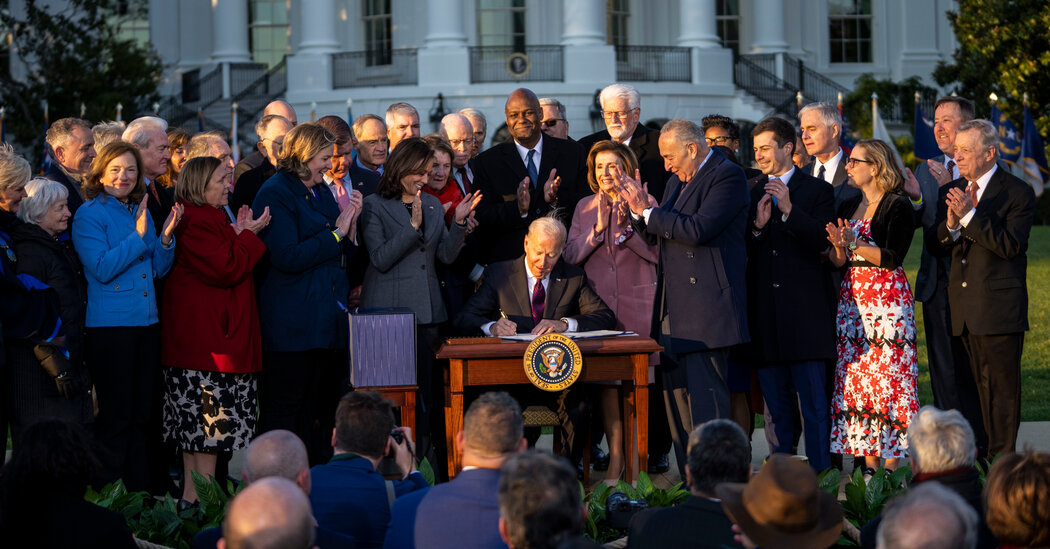
Ms. Ocasio-Cortez and other Democrats acknowledge that a significant part of the challenge facing their party is structural: With slim congressional majorities, the party cannot pass anything unless the entire caucus agrees. That empowers moderate Democrats like Senator Joe Manchin III of West Virginia to block some of the biggest promises to their supporters, including a broad voting rights bill.
A more aggressive approach may not lead to eventual passage of an immigration or voting rights law, but it would signal to Democrats that Mr. Biden is fighting for them, said Faiz Shakir, a close adviser to Senator Bernie Sanders of Vermont. Mr. Shakir and others worry that the focus on the two significant pieces of legislation — infrastructure and the spending bill — won’t be enough to energize supporters skeptical of the federal government’s ability to improve their lives.
“I’m a supporter of Biden, a supporter of the agenda, and I’m frustrated and upset with him to allow this to go in the direction it has,” said Mr. Shakir, who managed Mr. Sanders’s presidential run in 2020. “It looks like we have President Manchin instead of President Biden in this debate.”
He added: “It’s made the president look weak.”
The divide over how much attention to devote to staunch Democratic constituencies versus moderate swing voters taps into a political debate that’s long roiled the party: Is it more important to energize the base or to persuade swing voters? And can Democrats do both things at once?
White House advisers argue that winning swing voters, particularly the suburban independents who play an outsize role in battleground districts, is what will keep Democrats in power — or at least curb the scale of their midterm losses. They see the drop among core groups of Democrats as reflective of a challenging political moment — rising inflation, the continued pandemic, uncertainty about schools — rather than unhappiness with the administration’s priorities.
“It’s November of 2021, not September of 2022,” John Anzalone, Mr. Biden’s pollster, said. “If we pass Build Back Better, we have a great message going into the midterms, when the bell rings on Labor Day, about what we’ve done for people.”
Even pared back from the $3.5 trillion plan that Mr. Biden originally sought, the legislation that passed the House earlier this month offers proposals transforming child care, elder care, prescription drugs and financial aid for college, as well as making the largest investment ever to slow climate change. But some of the most popular policies will not be felt by voters until long after the midterm elections, nor will the impact of many of the infrastructure projects.



